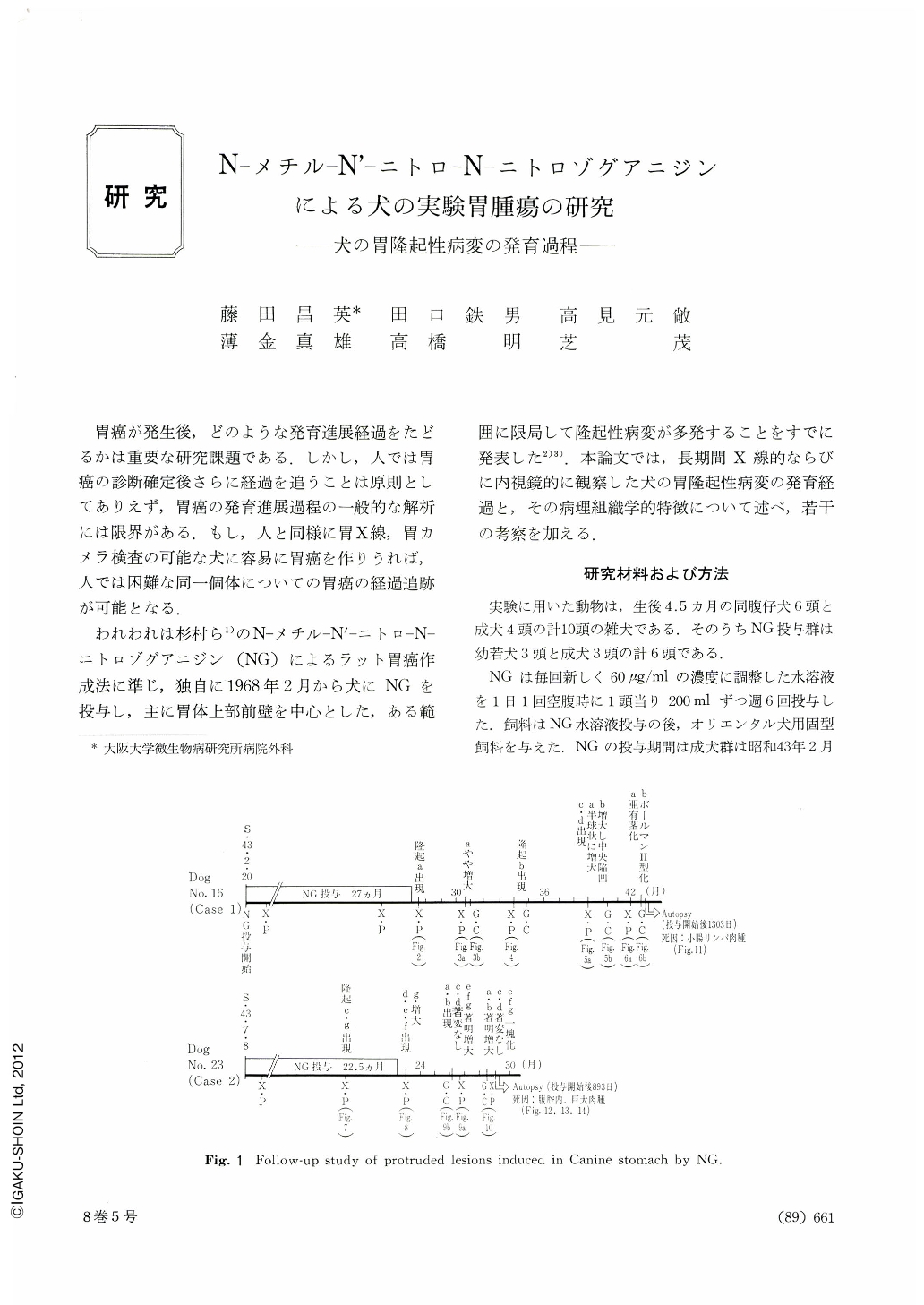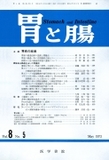Japanese
English
- 有料閲覧
- Abstract 文献概要
- 1ページ目 Look Inside
胃癌が発生後,どのような発育進展経過をたどるかは重要な研究課題である.しかし,人では胃癌の診断確定後さらに経過を追うことは原則としてありえず,胃癌の発育進展過程の一般的な解析には限界がある.もし,人と同様に胃X線,胃カメラ検査の可能な犬に容易に胃癌を作りうれば,人では困難な同一個体についての胃癌の経過追跡が可能となる.
われわれは杉村ら1)のN-メチル-N'-ニトロ-N-ニトロゾグアニジン(NG)によるラット胃癌作成法に準じ,独自に1968年2月から犬にNGを投与し,主に胃体上部前壁を中心とした,ある範囲に限局して隆起性病変が多発することをすでに発表した2)3).本論文では,長期間X線的ならびに内視鏡的に観察した犬の胃隆起性病変の発育経過と,その病理組織学的特徴について述べ,若干の考察を加える.
The study of the developmental process of gastric cancer from the pathological and the clinical view points is an interesting subject.
In 1970, we reported that multiple protruded lesions were produced with a high incidence limited to the anterior wall of the upper body of the dog stomach by N-methyl-N'-nitro-N-nitrosoguanidine (NG).
In this paper is described the developmental progress of the lesions as determined by repeated roentgenographic and endoscopic examinations, and the histological features of the gastric lesions in two dogs followed up for 10 and 15 months respectively, after the tumor was first detected.
The growth patterns of protruded lesions of dog stomach in NG carcinogenesis were of two types. Both types in early stages were found to be in the form of small plaques.
Type A lesions were those that grew gradually both in height and width to assume a hemispherical shape and later developed into a polyp with a slight constriction at the base. Histologically, this type was either an atypical adenoma or a papillary adenocarcinoma.
Type B lesions were those that developed to form broad-based polypoid lesions with a central depression, and later some of them developed into a form that resembled Borrmann type Ⅱ in shape. Microscopically, these tumors were either a leiomyosarcoma or a mixed tumor consisting of sarcomatous and atypical adenomatous elements.
Type B lesions showed a more rapid rate of growth than type A lesions.

Copyright © 1973, Igaku-Shoin Ltd. All rights reserved.


